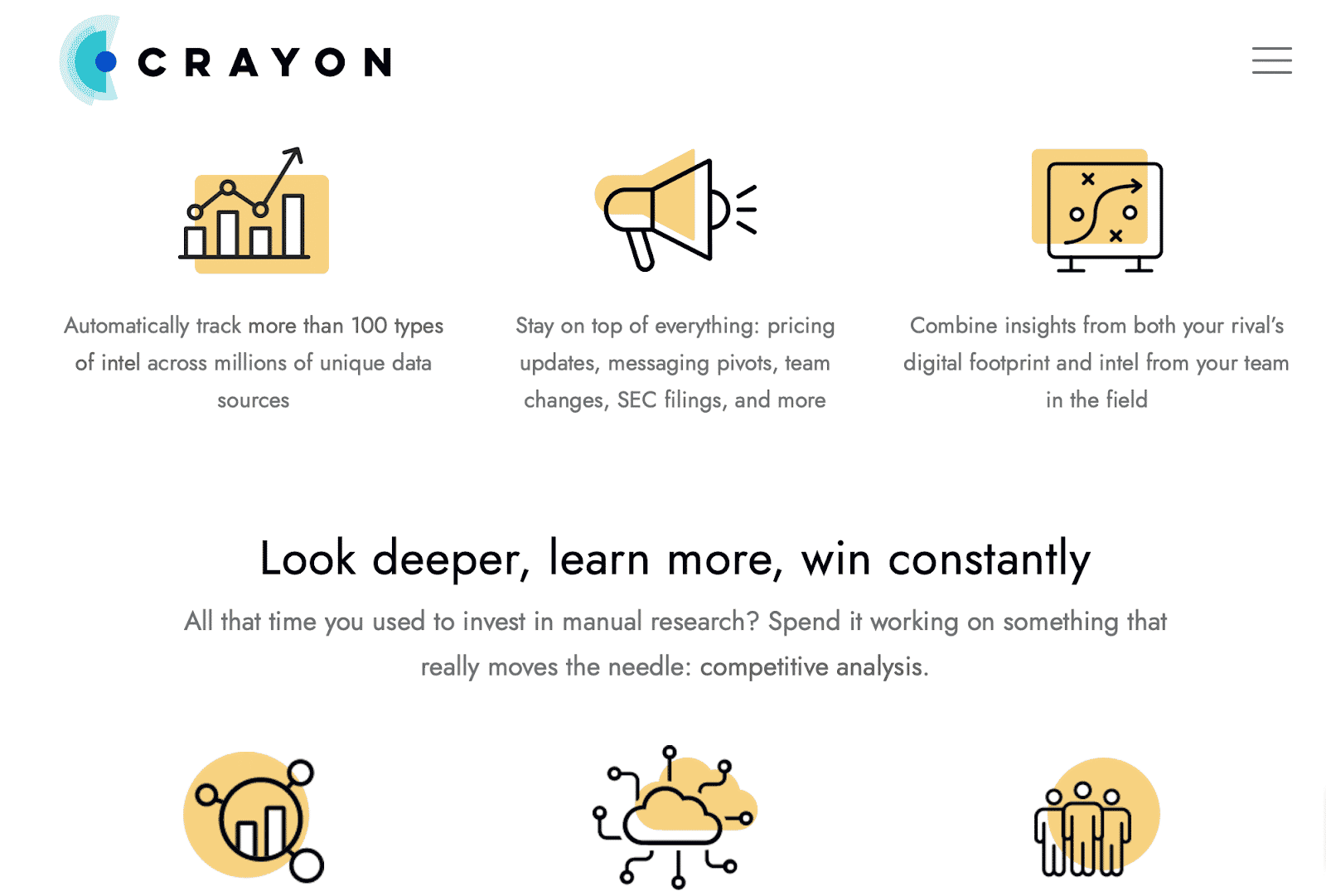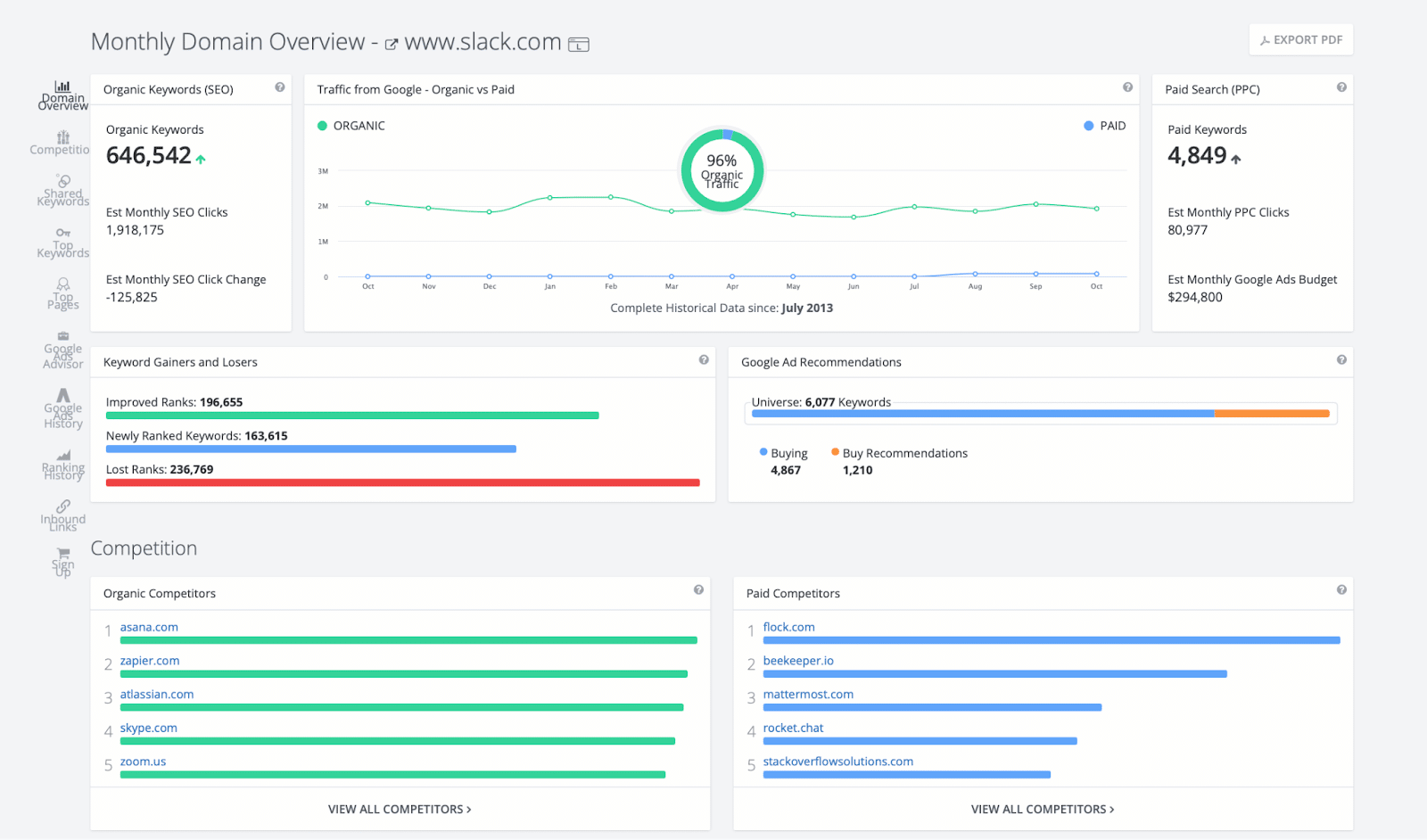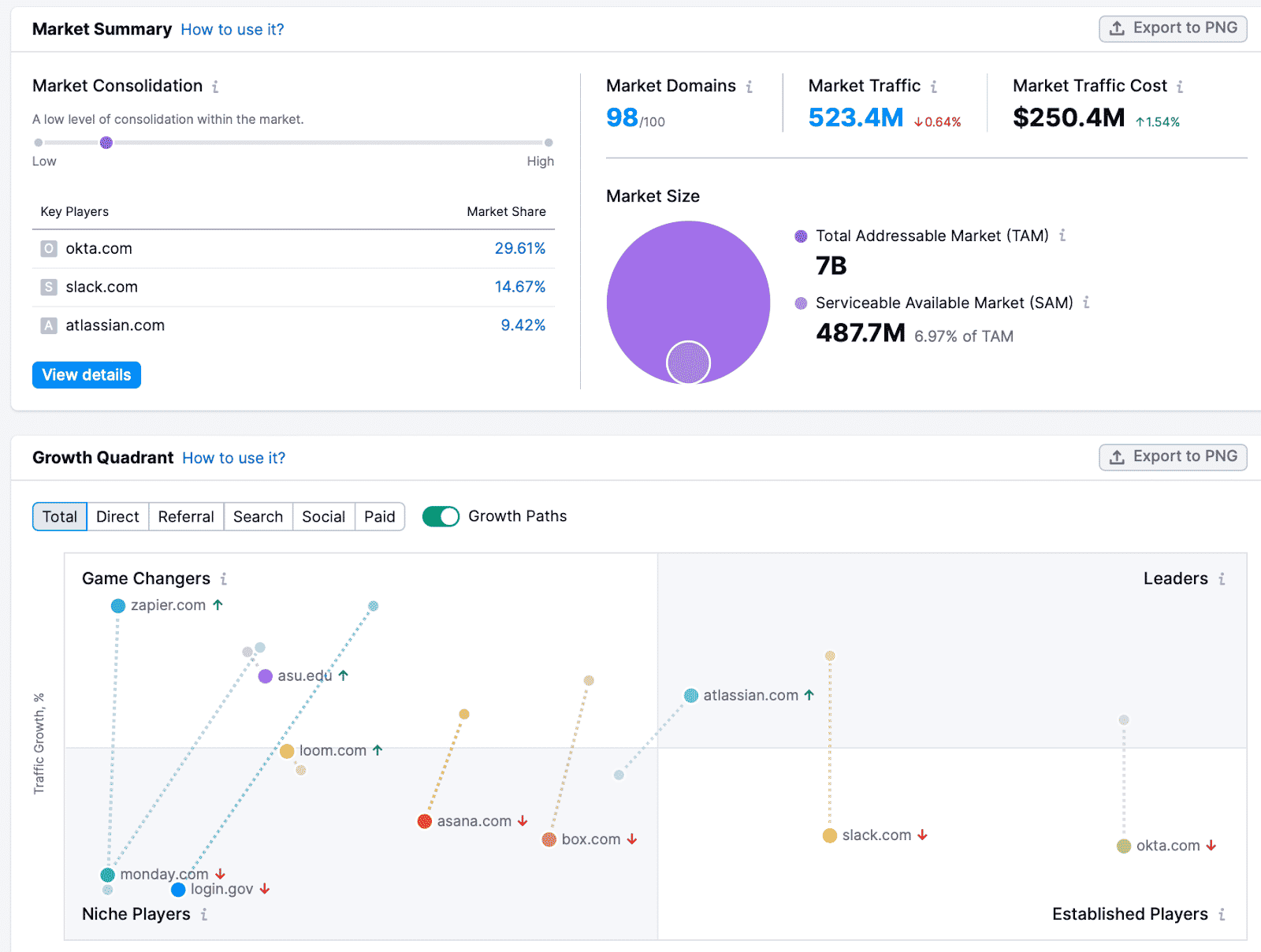5 Outstanding Competitor Analysis Tools for Startups

We all know how important it is to keep a close eye on every type of competitor your business has.
Actually having the time and ability to track your competitor’s actions and marketing plans, however, is sometimes easier said than done.
That’s where competitor analysis tools come into play.
There are a variety of competitor analysis tools that can help you do everything from identifying competitors to tracking their online offers, messaging, advertising campaigns, and more. These tools make it much easier to keep a close eye on your competition so that you can factor their actions into the equation and level up accordingly. It’s all about playing chess, not checkers, when it comes to competing for customers in a busy and sometimes saturated market.
There are plenty of options on the market, but in this post, we’re going to take a look at what you should look for in competitor analysis tools and share my five go-to choices for startups.
What to Look for in Competitor Analysis Tools
You’re ready to dive deep into competitor analytics. Outstanding!
Now you just need to know which tools you should choose.
We’re going to share our favorites in this post, but when choosing competitor analytics tools, it’s important to make sure that they meet the following criteria:
- They’re within your budget. Some tools can be exorbitantly expensive, but competitor analysis tools come in a wide variety of prices. Make sure that the tools you’re choosing meet your full needs within your budget; if not, keep looking.
- They give you the specific information you’re looking for. If you’re wanting to identify competition, you need a specific type of competitor analysis tool for that. And if you want to keep a laser-eyed focus on their social media, that’s another type of specialized tool. Make a list of exactly what you want to watch—and how often—before choosing a tool.
- The tool allows you to watch multiple competitors at scale. Some tools will allow you to look up plenty of great competition about a single competitor manually. MozBar is a great example— you can look up any website’s domain name and get some solid info about their ranking and site performance. When it comes to in-depth competitor analysis, though, it’s most useful to find tools that allow you to work at scale. This means finding a tool that can help you watch multiple competitors and ideally on a long-term and/or automated basis— not just getting a manual, single snapshot in time.
With that being said, let’s take a look at our five favorite competitive analysis tools and what we love about them.
1. Crayon
Crayon is one of the most in-depth competitive analysis tools on the market, and it’s my personal favorite for all-encompassing, intensive competitor data.
This tool uses artificial intelligence (AI) to constantly monitor everything your competition is doing, compiling and analyzing every data point they come across so that you have all the relevant information you need right at your fingertips. It also uses machine learning to take feedback from your team’s internal data to along with accessing external data, using both real-time and historical data from your team and the market itself.
Track over 100 types of data across millions of data source to stay on everything from pricing, messaging pivots, SEC filings, and team changes. You can get word clouds to better understand the competition’s messaging, and receive regular reports about progress, changes, and more.

All customers are also paired up with a competitor analysis expert from Crayon to help flag key insights and to understand them, adding an invaluable layer that many other tools don’t offer.
You can get a demo with Crayon here.
2. Klue
Klue is an insanely popular— and hyper effective— competitor analysis tool.
Like Crayon, Klue will access data from millions of data points online using AI and compile all of it into a single, user-friendly dashboard for you. Klue will offer insights into your competition with keyword insights, content tracking, site page monitoring, and news monitoring. When they start making changes or shift their messaging, you’ll know.
Another notable feature: Klue (also like Crayon) will create outstanding competitive battlecards for your sales team. These are easy-to-scan resources that give your salesteam the information they need when battling against a specific competitor for an individual customer. They know which buttons to push, metaphorically speaking, to win over your customers during a sales call by highlighting the right features, pricing, USP, and more. Their battlecards are easy to create, customize, and utilize.

And one more nice advantage: Klue integrates with some of the most common tools on there, including Slack, Gong, Notion, Microsoft Teams, and more, making collaboration and streamlining work easier and more efficient.
3. SpyFu
SpyFu has been around for a while, and I’ve been recommending it for different competitor analysis purposes for nearly a decade now.
If you want to keep a close eye on what specific competitors are doing with their keywords online— including both organic SEO and PPC keywords— this is a good tool to use.
SpyFu will provide the following competitor analysis features:
- Domain comparisons that show ranking, traffic analysis, and more
- Insights into competitor’s SEO and PPC strategies and keywords
- Helping you to identify new top competition in the market
SpyFu is a little more time intensive to use than the previous two tools, and it’s a little more niche in terms of the data it provides. You can search for a single domain and see their traffic analysis, the keywords they’re targeting, and who their top competition is. You could search for your own domain to find top competitors, or search for your competition.

I’ve personally used SpyFu to help clients create content strategies that would help them to outperform their competition, which is a core part of marketing that all businesses need to consider. And for those investing in PPC marketing, this is a great way to discover some of your competition’s highest-value keywords.
4. Semrush
Semrush is another tool that I frequently use for my own work. It’s got a great user interface, it gives me all the information I need for keyword research, and it has some really solid competitor analytics features.
These are the features in their Suite of tools I use most frequently:
- Market Explorer. Market Explorer can help you identify direct and indirect competitors in the space, including those that are trying to rank for the same keywords that you are. It will also show you who is getting what share of the market traffic and where it’s coming from for each brand, along with traffic generation strategies.
- EyeOn Tracking. This is Semrush’s automated competitor analytics tool that tracks critical data from identified competitors automatically. This includes new content posted, new messaging, activity trends, and the products and services being marketed most heavily.
- Individual competitor reports. You can search for any domain name through Semrush can get a wealth of data. See where their specific traffic is coming from and how traffic moves through their site. You can check their backlink profile or how they’re ranking for different keywords. If you’re looking for specific info for a specific competitor, this is a good tool to use.

5. Owletter
I’ve always been a big believer in the concept that if you want to get your finger on the pulse of what your competition is really doing, getting a close look at their email marketing campaigns is a good start. This is where they’re testing and distributing offers on a wide-scale basis to an engaged audience, as well as announcing new products, launching sales, and creating engagement campaigns.
This is why I’m a fan of Owletter, which is specifically a competitor analysis tool for email marketing. It captures every email sent from a brand to their subscriber list, takes a screenshot of each one, and analyzes it for you. Your team can access these screenshots at any time for a deeper dive into individual competitors.

You can get alerts when certain keywords are used (like “new product” or “launch,” for example), see what days they send out emails, and see how often they’re distributing campaigns.
While Owletter is the most niched-down tool on this list, the ability to store emails from multiple competitors is an incredible advantage. Tracking your most direct and fiercest competitors here is a good way to go.
Final Thoughts
Competitor analysis is a massive undertaking when done correctly, but it’s certainly much less painful (and much more accurate) with the right weapons in your arsenal.
And while there’s a million SaaS tools we all need to purchase for our business’s and RevOps growth, it’s crucial to remember that it’s much more difficult to succeed in a market that we don’t understand and aren’t tracking fully. If you don’t know what’s happening in the market, it can be difficult to truly be competitive and to ensure that you’re standing out.
Each of these five tools offer different unique features (and come in at a variety of different price points), so consider which could benefit you most. Many offer either free trials or demos so that you can get a better idea of which is right for you before taking the plunge; take advantage of that to find the best options for you.
Want to learn more about competitor analysis? Check out our competitor analysis guide here!


